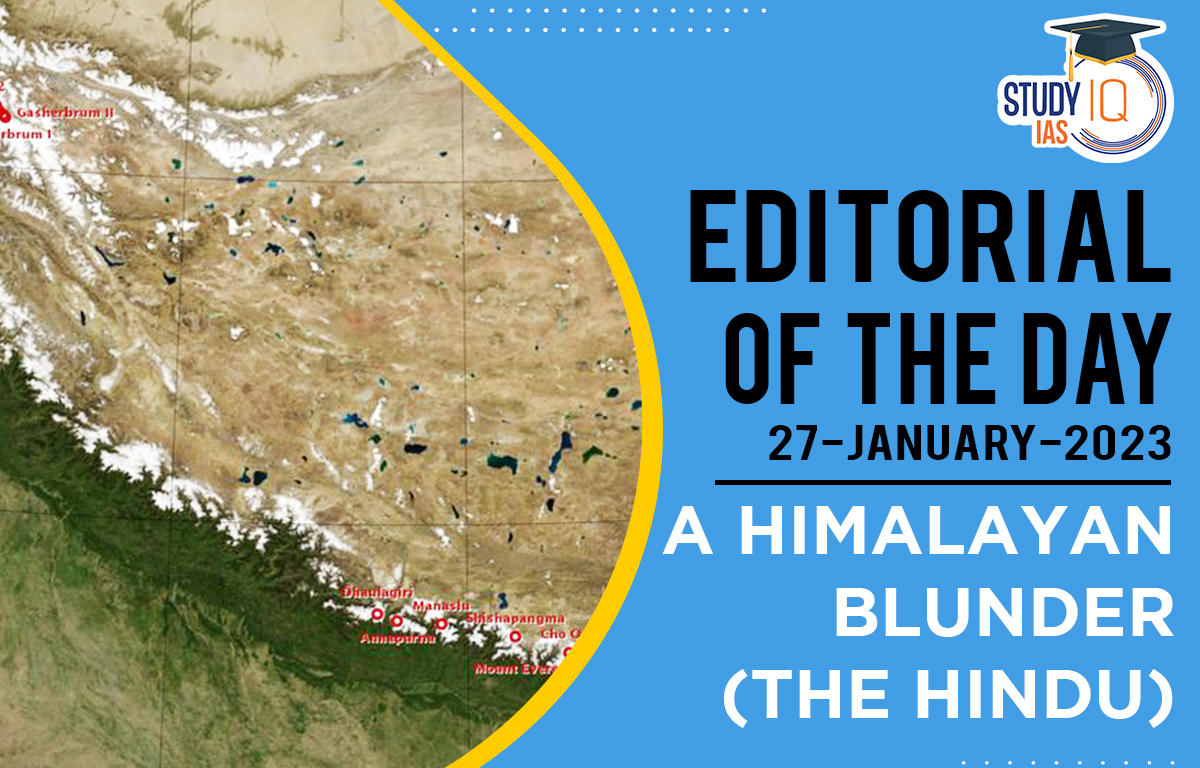Table of Contents
Context of the Article: The Himalayan Mountains are mainly the shale upwelling of the sea. There is a considerable amount of research on the vulnerabilities of Himalayan geology, brought to the fore recently with the sinking of Joshimath town.
- The Himalayas are a fragile mountain range that is still rising as the Indian plate continues to push into the Asian plate.
Joshimath Case
- Joshimath is a seismic zone; in Joshimath ground beneath is a heterogeneous mass with many pockets of variegated rock and more open spaces occupied by water and mud from old glacial deposits, and, it seems, some important aquifers as well.
Uttarakhand Infrastructure Issues Highlighted by the Author
- Planning in Himalayas: During British times roads were designed with great care from the weak and infirm shale hills and paid close attention to drainage.
- Even so, they found that the hillside needed three decades or so to stabilize with enough trees and other vegetation.
- Uttarakhand region had only three metalled mountain roads: one from Haldwani to Nainital, one from Dehradun to Mussoorie, and one from Haldwani to Ranikhet – altogether a little over 100 km.
- Degradation of vegetation: With the consequent loss of forest cover and extreme weather events (like the 2013 Kedarnath flood), catastrophes have occurred at a steady beat in all of Uttarakhand.
- The local soil and water have also been degraded. One indication of this is the declining number of natural mineral water springs.
- Border infrastructure: India is competing with China to build high-altitude railways. But the mountains in Tibet on the Chinese side are made of firm rock whereas most of the Himalayan Mountains are made of the more unstable shale.
- Both the Himalayas and Uttarakhand in particular also straddle an earthquake-prone zone. So these construction activities must cease.
- Changing nature of Char Dham yatra: It is also notable that there were no motorable roads to the Char Dham sites (Yamunotri, Gangotri, Badrinath, and Kedarnath) earlier; they all concluded in Rishikesh.
- Visitors can travel on roads and even on four-lane highways. Both they and the sites are losing their communion with nature.
Conclusion
- Young and frail Himalayas can’t afford high construction activities, and high build-up of infrastructure. Government needs to look into the policy related to the infrastructure in Hilly states.
- Joshimath is a warning, a forerunner of what is to come. India needs to learn from other countries like Brazil declaring the Amazon basin a strictly protected zone.
- Brazil has asked all nations to contribute to this effort. The Amazon is not just a Brazilian entity: the climate of the whole world depends on its health.


 Current Affairs 25th April 2024 for UPSC...
Current Affairs 25th April 2024 for UPSC...
 Editorial of the day (25th Apr): UK's Rw...
Editorial of the day (25th Apr): UK's Rw...
 Telangana Judicial Recruitment Notificat...
Telangana Judicial Recruitment Notificat...

















